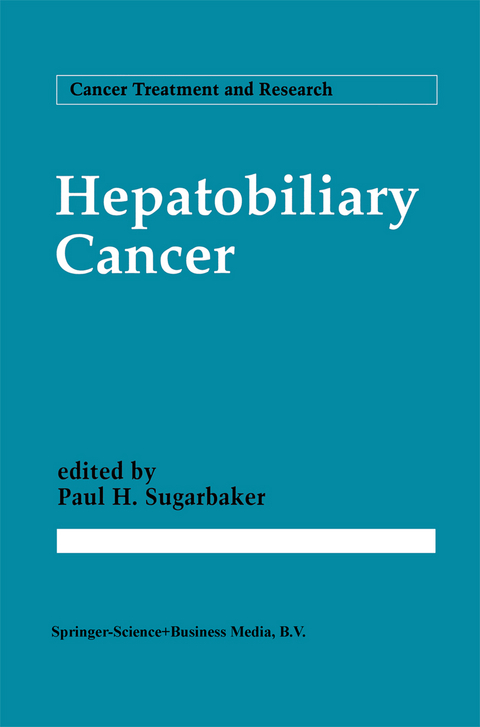
Hepatobiliary Cancer
Springer-Verlag New York Inc.
978-1-4613-6115-2 (ISBN)
1. Inefficiency of metastasis from colorectal carcinomas.- 2. Cytoreductive approach to treatment of multiple liver metastases.- 3. Hepatoma registry of the western world.- 4. Resection of hepatic metastases from colorectal carcinoma.- 5. Surgical managemet of hepatic metastases from large bowel cancer.- 6. Repeat resections of primary hepatic malignancies.- 7. Repeat resections for recurrent colorectal liver metastases.- 8. Liver transplantation as an option for primary malignancy.- 9. Surgical treatment of cholangiocarcinoma.- 10. Treatment of gallbladder cancer.- 11. Use of clamps in hepatobiliary surgery.- 12. Chemotherapy after hepatic resection of colorectal metastases.- 13. Radiological evaluation of metastases to the liver: The Emory experience.- 14. Hepatic vascular exclusion for hepatic resection.- 15. Radiologic evaluation and treatment of gallbladder and biliary tree carcinoma.- 16. Repeat liver resections from colorectal metastasis.- 17. Intraoperative ultrasound and liver tumor.- 18. Parenchymal dissection techniques.- 19. Surgical resection and transplantation for hepatocellular carcinom.- 20. Causes of death in patients undergoing liver surgery.- 21. Liver transplantation as an option in patients with cholangiocellular and bile duct carcinoma.- 22. Surgical management of hepatoma.- 23. Liver resectability based on physical characteristics.- 24. Prediction of the safe limits of hepatectomy by combined volumetric and functional measurements in patients with impaired hepatic function.- 25. Quantitative liver function testing as a preoperative parameter in hepatic resection.- 26. Decreasing posthepatectomy liver failure.- 27. Current status in liver function tests: Technical considerations.
| Reihe/Serie | Cancer Treatment and Research ; 69 |
|---|---|
| Zusatzinfo | 99 Illustrations, black and white; XVIII, 326 p. 99 illus. |
| Verlagsort | New York, NY |
| Sprache | englisch |
| Maße | 155 x 235 mm |
| Themenwelt | Medizin / Pharmazie ► Medizinische Fachgebiete ► Chirurgie |
| Medizin / Pharmazie ► Medizinische Fachgebiete ► Onkologie | |
| ISBN-10 | 1-4613-6115-X / 146136115X |
| ISBN-13 | 978-1-4613-6115-2 / 9781461361152 |
| Zustand | Neuware |
| Haben Sie eine Frage zum Produkt? |
aus dem Bereich


